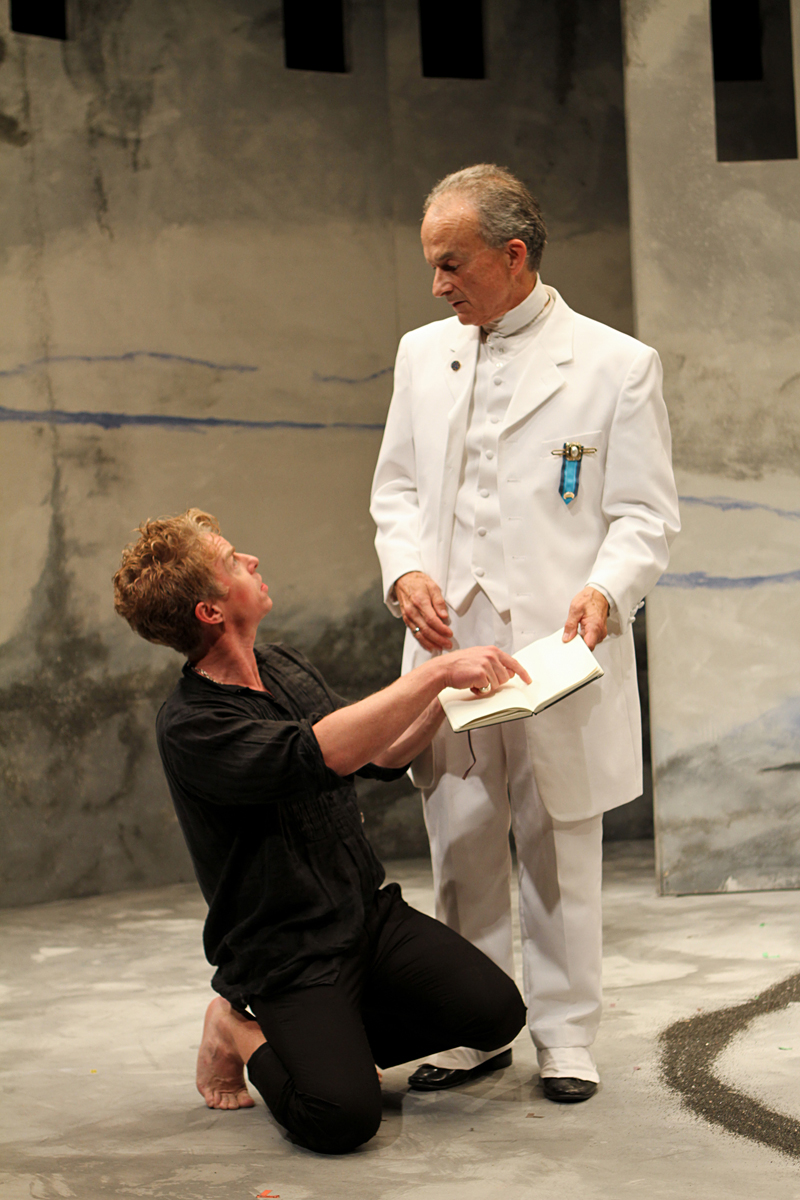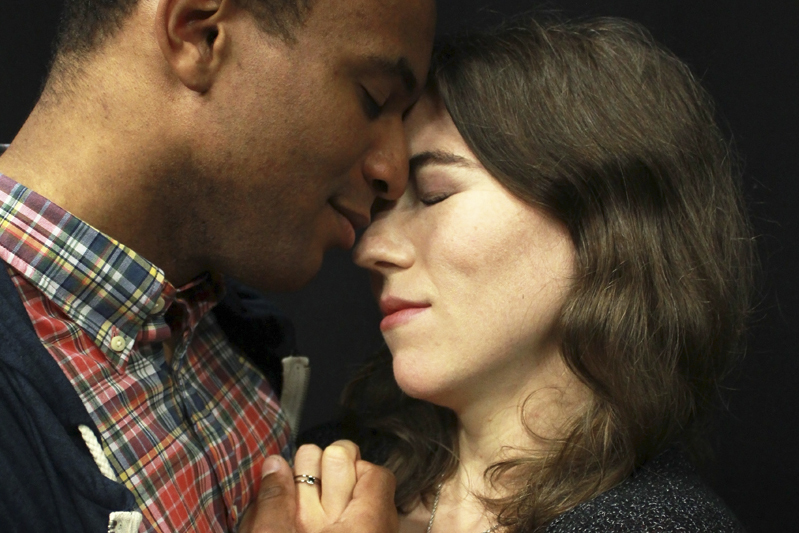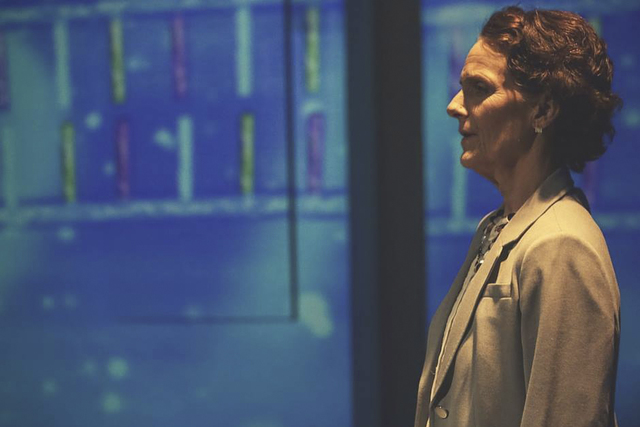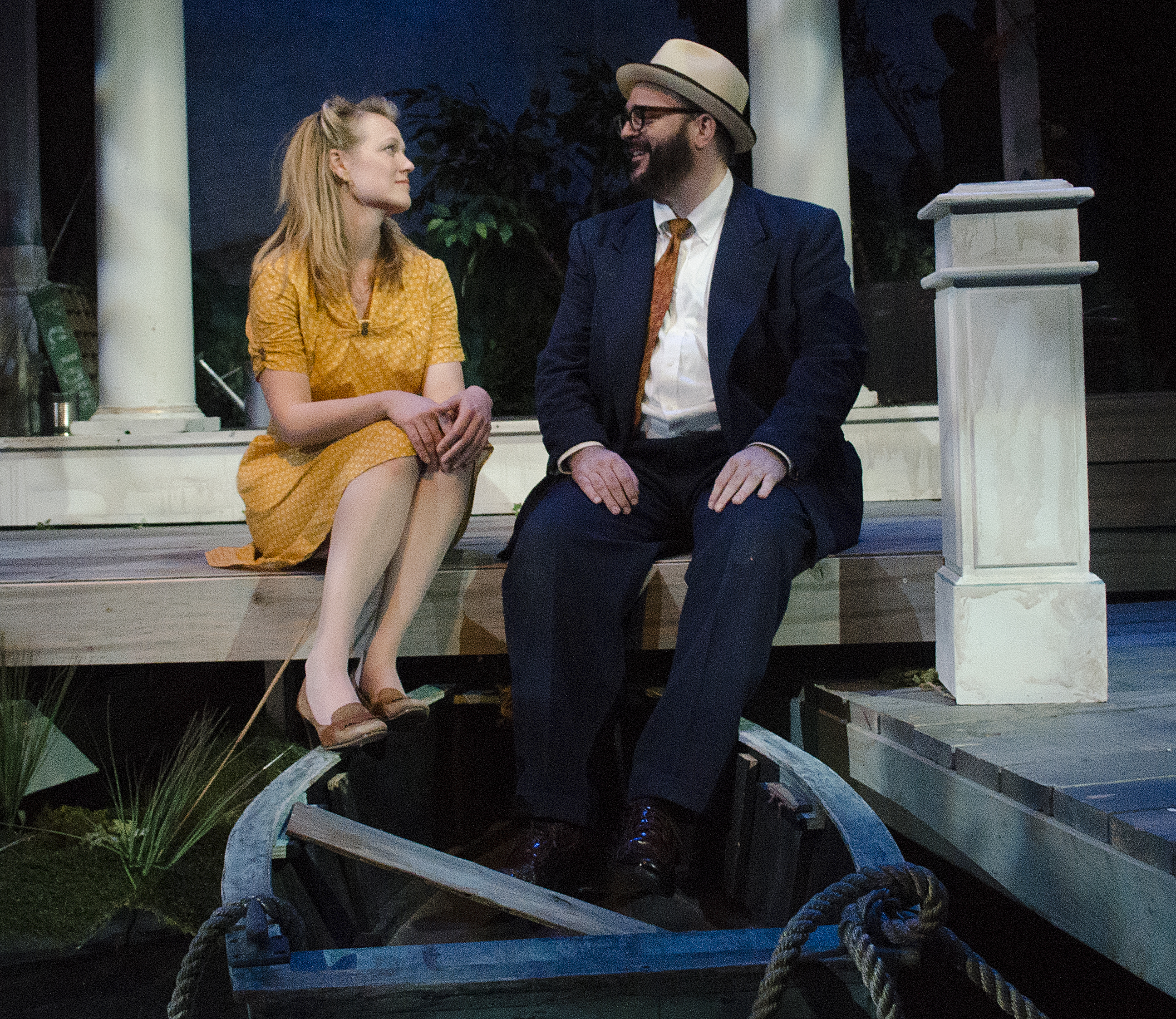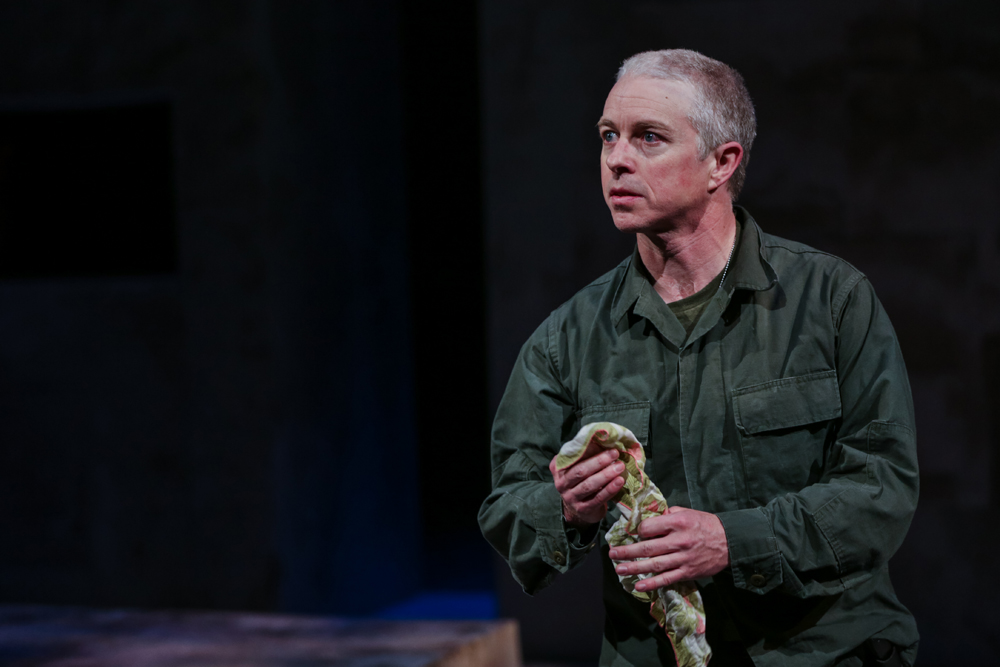You wouldn’t guess it from the opening “Who’s there?” uttered in pitch darkness, but director John Langs sets Seattle Shakes’ trim, wry production of Hamlet in an icy land hemmed in uncomfortably closely by igloo-like curved walls from which you can almost feel the chill. The 1930s-style costumes are mostly in bleached tones, except when they’re black. And the booming PA pronouncements of an unpopular leader suggest scary political rallies that echo to the corners of the earth. Change is coming. Or violence. Or both.
The subtext here isn’t Tea Party anger or midterm elections. Rather, Langs seems to be suggesting Neville Chamberlain’s dithering before World War II, the slide from windy negotiation to war. Intimate personal exchanges will have catastrophic political consequences that reach beyond one small nation’s borders.
What drives this home is Darragh Kennan’s choice to make Hamlet not merely a churlish adolescent giving the world the finger, but a forward-looking king-to-be. He’s a political animal whose relations with the world are full of calculation; power will come to him from the determined abnegation of his own desires. Kennan has an intelligent, furrow-able face atop a boy’s build. His Hamlet leans back frequently, away from conversations, as though resisting the distortion of proximity and instead angling for a more strategic view. He speaks quickly and clearly, with such smooth transitions between moods that it’s like watching a high-speed Doppler radar report of the weather conditions in his head. Yet the “l” in “uncle” sticks in his mouth, seeming to swell his tongue in an allergic reaction.
In keeping with the play’s cynically detached political mood, Richard Ziman portrays ruler Claudius as a smooth operator whose prayers register like singsong coos to the press. (Look at my piety; now leave me alone.) When Hamlet observes his prayers in Act 2, it’s impossible to tell if Claudius is laughing or crying, an ambiguity which further illustrates his opportunism.
Indeed, Langs has removed all the carnality and Oedipal passion from this frigid court. Such emotions are pointedly faked in the play-within-a-play, a carnivalesque farrago of medieval costumes, Moorish rhythms, Alice Cooper makeup, pot-toking, and slapstick fornication.
This life-mocking charade, and Hamlet’s doublespeak about it, seem to be larger contributors to Ophelia’s descent into madness than her father Polonius’ death. Brenda Joyner movingly takes Ophelia from playful and intelligent to a terrifying, grimy, half-naked, loin-scratching animal. (The performance recalls her recent role as a girl who goes ape in New Century Theatre’s The Nature of Dust.) And David Pichette is the most deliciously tedious Polonius imaginable, all pseudo-savvy and protocol, as unmoved by his son Laertes’ (Shawn Law) exuberant parting bear hug as an island is by a tugboat.
According to the program notes, Langs had a son while he was working on this production; possibly the experience caused him to humanize the ghost (Charles Leggett) with robust physicality and wish-fulfilling qualities—like the ability to embrace his son, which he does several times. Though the ghost is often depicted as something of a superhero, Langs takes this one step further by having Hamlet, after his death, depart with him through a portal in the back wall. The reunion feels a little incongruous after Hamlet’s clear-eyed, pragmatic interpretation of the ghost up to that point. (Rather than simply acting on the ghost’s words, Hamlet sets about proving the allegations.) But Langs helps prepare us for it with the preceding graveyard scene, when Hamlet seems more entranced by the skull’s beauty than horrified by its decay. He’s ready to go beyond the everyday.
And so are we. After following all the chessboard calculations, maybe we deserve a little escapism and emotional release.
